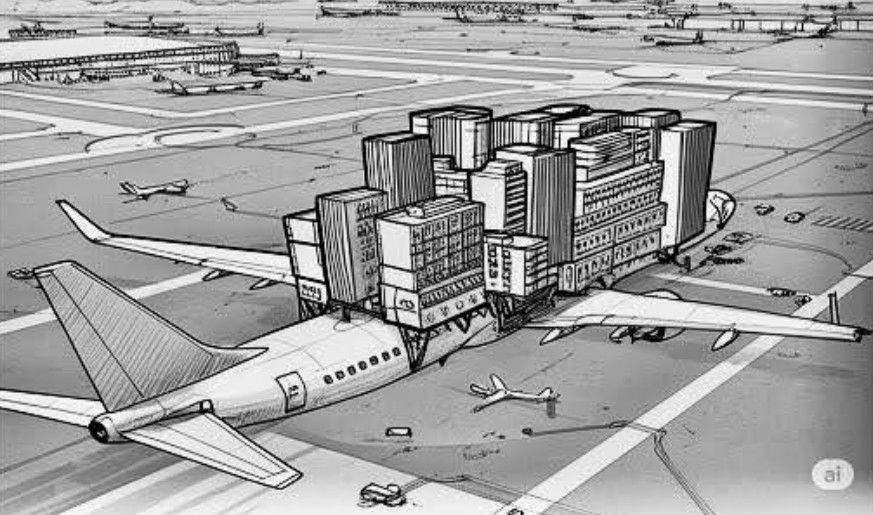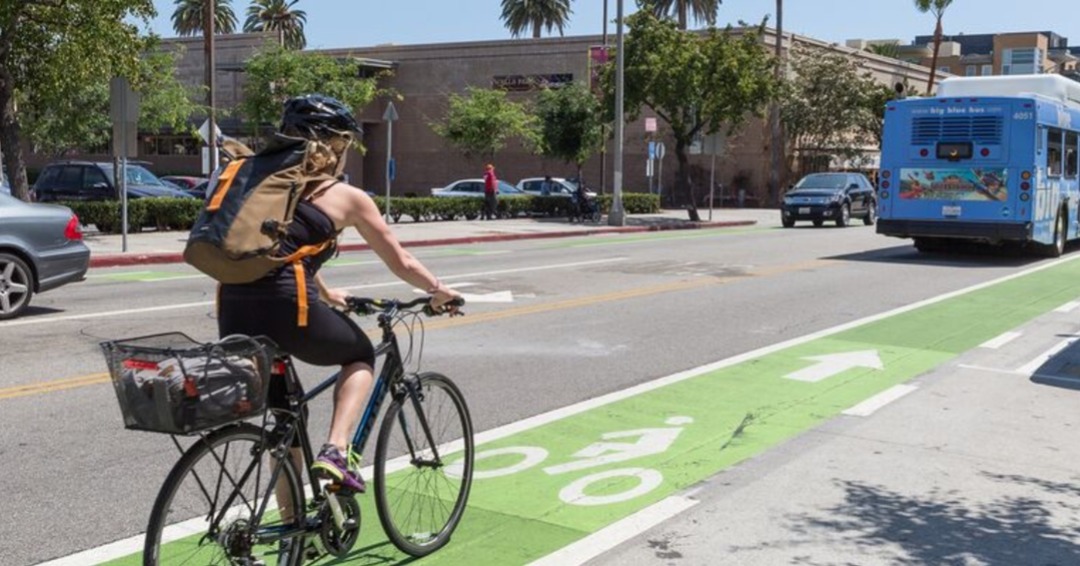
SMO: Fantasy, Fact, and the Fog of Wishful Thinking
By someone who read the fine print
Every few months, a headline appears in Santa Monica promising that the airport—Santa Monica Airport (SMO)—will shut down by the end of 2028. Visions of a “Great Park” are fed into the public imagination, and wishful activists celebrate what they see as a done deal. But it’s not a done deal. It’s a classic case of hopeful messaging overtaking economic and ideological reality. A very big “pie in the sky” for the ‘true’ believers to blindly drool over.
In 2014, 15,000 (roughly only 16% of the total residents) voted for measure LC, which granted the City Council the right to decide the future of the airport; it was not a vote to close the airport. It was a vote that now gives the City Council the authority, without additional voter approval, to regulate use of the airport, and is effective Jan 1, 2029, per the 2017 FAA Consent Decree. Yet that hasn’t stopped local media and advocacy groups from repeatedly claiming that, per Measure LC, SMO will close on Dec. 31, 2028, and a “great park” will be built on the land. That is a fiction—satisfying fiction to some, but fiction nonetheless.
The Myth of 2028
In 2014, Measure LC amended the city charter, via Section 640, giving the City Council the authority to regulate SMO as an operating airport, or to close the airport—but only after a council vote takes place. That means as few as four of the seven members, i.e., a simple council majority, will make that decision. No public vote. No town hall. No public presentations. Just four people may decide the future of the land. That’s not a mandate to close, as they can just as easily decide to continue airport operations – that’s discretion. And it matters. Because, with two more voting cycles, you will have an opportunity to say who will be on the council to support your choice.
The Fine Print No One Likes to Read
Following LC, in 2017, the city signed the Consent Decree with the FAA. This was a legally binding agreement, not a feel-good resolution. And it said plainly “…after December 31, 2028, the Parties agree that the City may, in its sole discretion at any time on or after January 1, 2029, cease to operate the Airport as an airport and may close the Airport…”. The City is obligated to operate the Airport through December 31, 2028, AFTER WHICH date the City MAY decide to close the Airport. Note the word “MAY.” Not “will,” not “shall, and certainly not “must.”
Following the 2017 Consent Decree, the then city council issued a ‘resolution’ stating it was their desire to close SMO. A resolution is not a binding law, but rather a wish list by the then city council members, none of whom are still on the council.
Nonetheless, in January 2025, eight years later, the city attorney’s office issued a ‘memo’ that stated the council resolution of 2017, in their interpretation, was the only vote necessary to seal the closure date of midnight Dec 31, 2028.
Key Milestones:
- 2014-11-04: Measure LC passes—grants the Santa Monica City Council the authority to decide the airport’s future without requiring a public vote. Now, section 640 of the City Charter.
- 2017-01-27: The City signs a Consent Decree with the FAA, committing to operate SMO through December 31, 2028. After that, the City may choose to close it.
- 2017-02-28: The City Council issues a non-binding Resolution 11026 expressing intent to close the airport.
- 2025-01-28: The city attorney’s office interprets the 2017 resolution as a binding decision despite the Consent Decree’s plain language stating closure is optional after 2028.
The city attorney’s backdating the decision, thereby eliminating a final public forum wherein the residents can express their NOW preferences, given the many State development mandates since 2014, seems counter to the Consent Decree, which is a legal binding document, stating that SMO will stay open … through December 31, 2028, AFTER WHICH DATE the city MAY decide… Although not an attorney, after reviewing the documents, I am struggling to understand the logic behind the city attorney’s interpretation. Specifically, I don’t see how it wouldn’t be the council in place as of midnight on or after January 1, 2029, that has the responsibility to decide the future of air operations on the land.
However, if he is deemed correct, and the 2017 vote by the council will set the future of SMO, then it is also correct the current, or a new, council can vote again, any time between now and then, prior to midnight Dec 31, 2028, and support, by a new resolution, that on Jan 1, 2029 the airport will continue to operate. There are two more election cycles before 2029, so you, the anti-over-development voters, need to do everything possible to vote out the incumbents and elect new council members that will stop the development devastation our town is collapsing under. Have you driven down Lincoln or Wilshire lately? Your vote to maintain SMO as an airport can stop the thousands of housing units and development that will, in fact, occur with potential closure.
The council has already been presented with the economic reality that the city is broke and hinging on the verge of bankruptcy, and selling/leasing the land for development might help bail it out. There is irony here, too, as the city has chosen over the last ten years to slowly strangle airport operations, and the economic machine it actually was, and can be again. Per the City’s go-to economic advisors, HR&A, in a 2011 analysis, they reported “The airport Campus supported $275.2 million in total annual economic output in the City’s economy, of which $187.5 million occurred directly on-site and in local visitor venues”. Adjusted for inflation, that is $391.2 million that city policy has dismissed or diminished in its ideological goal of shuttering this economic engine that is SMO.
To Summarize: despite council’s open hostility to new businesses locating at the airport:
- $275.2 million in economic output in 2011
- $187.5 million generated directly on-site and in local venues
- ($391.2 million today, inflation-adjusted)
Most importantly, though, are the new state housing mandates that will over-ride city decisions should in fact SMO cease to operate as an airport. The Surplus Lands Act (SLA) and the Regional Housing Needs Assessment (RHNA) will impose an onerous number of housing units on the land. Already, there have been discussions in the council chambers of a minimum of 3000 ‘affordable’ units, which by all standards to date represent as little as 10% of the market rate units needed built by a developer for their economic feasibility. That would be 30,000 market-rate units. There was also discussion of the need for, at minimum, half the airport land set aside for low-income housing, and Santa Monica College is anxious to build student housing there. So there can be little doubt that, since LC passed, it was obvious there would never be a large park created with closure, and that there would indeed be maximum development.
The Politics of Magical Thinking
So why does the myth of the 2028 airport closure persist? Partly because it’s politically convenient. It allows officials to avoid tough conversations about competing land-use priorities. It soothes residents with visions of green space. And it conveniently sidelines the fact that closure is far from automatic—and not guaranteed, while, at the same time, closure will almost certainly result in extensive housing development, which in turn will require commercial/retail/market, etc. support, as well as new streets for access, emergency, and private vehicles, not to mention water, sewers, etc.
This is a classic case of magical thinking triumphing over policy literacy. It’s the local government equivalent of what we see occurring at the national level, promising a tax cut that pays for itself. You might want to keep an eye on the council chambers—and the city’s budget – as the temptation to sell off the land to help rectify 15-20 years of fiscal mismanagement is no doubt great. For those of you that think SMO land will become a ‘great park’, be careful what you wish for. It just might bite you in the ass.
Because here’s the truth: SMO has so many options. Closure is just one. And in a city where real estate is measured in gold, the future will likely be shaped not just by ideals—but by incentives, not ‘pie in the sky’. Maintaining SMO as an operating, economically viable airport is the only rational option. Remember, with two more voting cycles, you will have an opportunity to say who will be on the council to support your choice. The opportunity remains to preserve a valuable asset that provides jobs, economic value, and regional aviation access, with thoughtful planning—not assumptions dressed as certainty. Choose wisely.
Bob Taylor, AIA
For SMa.r.t.
Santa Monica Architects for a Responsible Tomorrow
Dan Jansenson, Architect, Building & Fire-Life Safety Commissioner; Robert H. Taylor, Architect AIA; Thane Roberts, Architect; Mario Fonda-Bonardi, Architect AIA (ex-Planning Commissioner); Sam Tolkin, Architect, Planning Commissioner; Michael Jolly AIR-CRE; Jack Hillbrand AIA, Landmarks Commission Architect; Matt Hoefler, Architect AIA
For previous articles, see www.santamonicaarch.wordpress.com/writing













